Four Seasons of Flowers Album (四景花卉图册 / Sì Jǐng Huā Huì Tú Cè)
—A Qing Dynasty Masterpiece by Qian Weicheng (钱维城, 1720–1772) and Dong Gao (董诰, 1740–1818)
Overview
These two silk-scroll albums, housed in Taipei’s National Palace Museum, exemplify Qing Dynasty court artistry through the boneless-and-branch technique (没骨折枝法), a method of painting flowers without ink outlines. Commissioned during the Qianlong (1735–1796) to Jiaqing (1796–1820) reigns, they blend botanical precision with poetic symbolism:
- Qian Weicheng’s version (40 panels): Each season (spring, summer, autumn, winter) features eight panels with imperial poems by Emperor Qianlong, celebrating agrarian prosperity and cosmic harmony.
- Dong Gao’s version (40 panels): Each season includes ten panels pairing two flowers per scene, emphasizing seasonal transitions and scholarly aesthetics.
Translation & Cultural Context
Artistic Techniques
- Boneless-and-Branch Method (没骨折枝法):
- Definition: A gongbi (工笔, fine-line) technique using mineral pigments directly on silk, avoiding ink outlines to create lifelike textures.
- Symbolism: “Branch” (折枝) refers to depicting only flower segments, symbolizing nature’s ephemeral beauty and the artist’s selective focus on harmony.
Album Structures
Dong Gao’s Album (董诰绘本):
| Season | Flower Pairings | Cultural Significance |
|---|---|---|
| Spring | Plum & Orchid, Apricot & Pear, Peach & Canola, Crabapple & Unknown Yellow Flower | Plum (resilience), Orchid (refinement), Apricot (scholarly virtue). |
| Summer | Poppies, Passionflowers, Lily & Carnation, Lily & Cockscomb | Lilies (purity), Passionflowers (imperial exoticism). |
| Autumn | Chrysanthemum & Hibiscus, Hollyhock & Morning Glory, Cockscomb & Balsam | Chrysanthemum (longevity), Balsam (perseverance). |
| Winter | Camellia & Orchid, Wintersweet & Red Plum, Narcissus & Loquat | Camellia (nobility), Wintersweet (hope in adversity). |
Qian Weicheng’s Album (钱维城绘本):
| Season | Flower Pairings | Imperial Poems |
|---|---|---|
| Spring | Apricot, Wisteria, Crabapple, Pear, Peach, Azalea, Yellow Rose, Peony | “Apricot blooms herald spring’s labor; / Farmers’ joy surpasses poets’ idle chatter.” |
| Summer | Jasmine, Pomegranate, Carnation, Poppy | “Summer rains bless the land; / Pomegranates burst, a monarch’s hand.” |
| Autumn | Hibiscus, Chrysanthemum, Hollyhock, Maple | “Chrysanthemums defy frost; / Autumn’s gold is never lost.” |
| Winter | Red Plum, Narcissus, Wintersweet, Camellia | “Plum blossoms brave the snow; / Winter’s end, spring’s promise we know.” |
Artists’ Backgrounds
Dong Gao (董诰)
- Role: Minister of Works, co-editor of the Siku Quanshu (China’s largest literary encyclopedia).
- Style: Merged Southern Song lyricism with meticulous detail; collaborated with his father, Dong Bangda (董邦达), known as the “Big and Little Dong” (大、小董) in art circles.
Qian Weicheng (钱维城)
- Role: Qianlong’s favorite court painter, awarded the title Zhuangyuan (状元, Imperial Examination top scorer).
- Style: Blended Yuan Dynasty landscapes with Qing realism; his works were stamped with eight imperial seals by Qianlong.
Philosophical & Imperial Themes
- Confucian Governance:
- Qian Weicheng’s poems reflect Qianlong’s vision of “benevolent rule”, linking flower cycles to agricultural prosperity.
- Daoist Harmony:
- Dong Gao’s pairings (e.g., plum and orchid) embody yin-yang balance, echoing Daoist ideals of cosmic unity.
- Seasonal Calendar:
- Both albums align with the 24 Solar Terms, a traditional agricultural calendar. For example, “Spring Rain Over Bamboo” corresponds to Lichun (立春, Start of Spring).
Global Parallels
- Comparative Art:
- Similar to Japanese kachō-ga (花鳥画) but emphasizes imperial collaboration over solitary contemplation.
- Contrasts with Dutch Golden Age still lifes (e.g., Rachel Ruysch) by prioritizing symbolic harmony over material opulence.
Legacy & Accessibility
- Digitization: High-resolution scans available via the National Palace Museum.
- Exhibitions: Featured in Rhythm of the Cosmos: Qing Dynasty Nature Paintings (Shanghai, 2024), highlighting their ecological aesthetics.
References
: National Palace Museum archives on Dong Gao and Qian Weicheng.
: Academic studies on Qing Dynasty imperial art patronage.
Note: For virtual viewing, visit the National Palace Museum’s digital platform: https://theme.npm.edu.tw.
Full Translation of Key Terms
- 没骨折枝法: Boneless-and-Branch Technique – A method of painting flowers without ink outlines, using layered mineral pigments.
- 工笔: Gongbi – “Fine-line” realism, emphasizing detail and color precision.
- 節節雙喜: Double Joy with Each Segment – A pun on bamboo joints (節) and festive joy (喜), symbolizing continuous blessings.

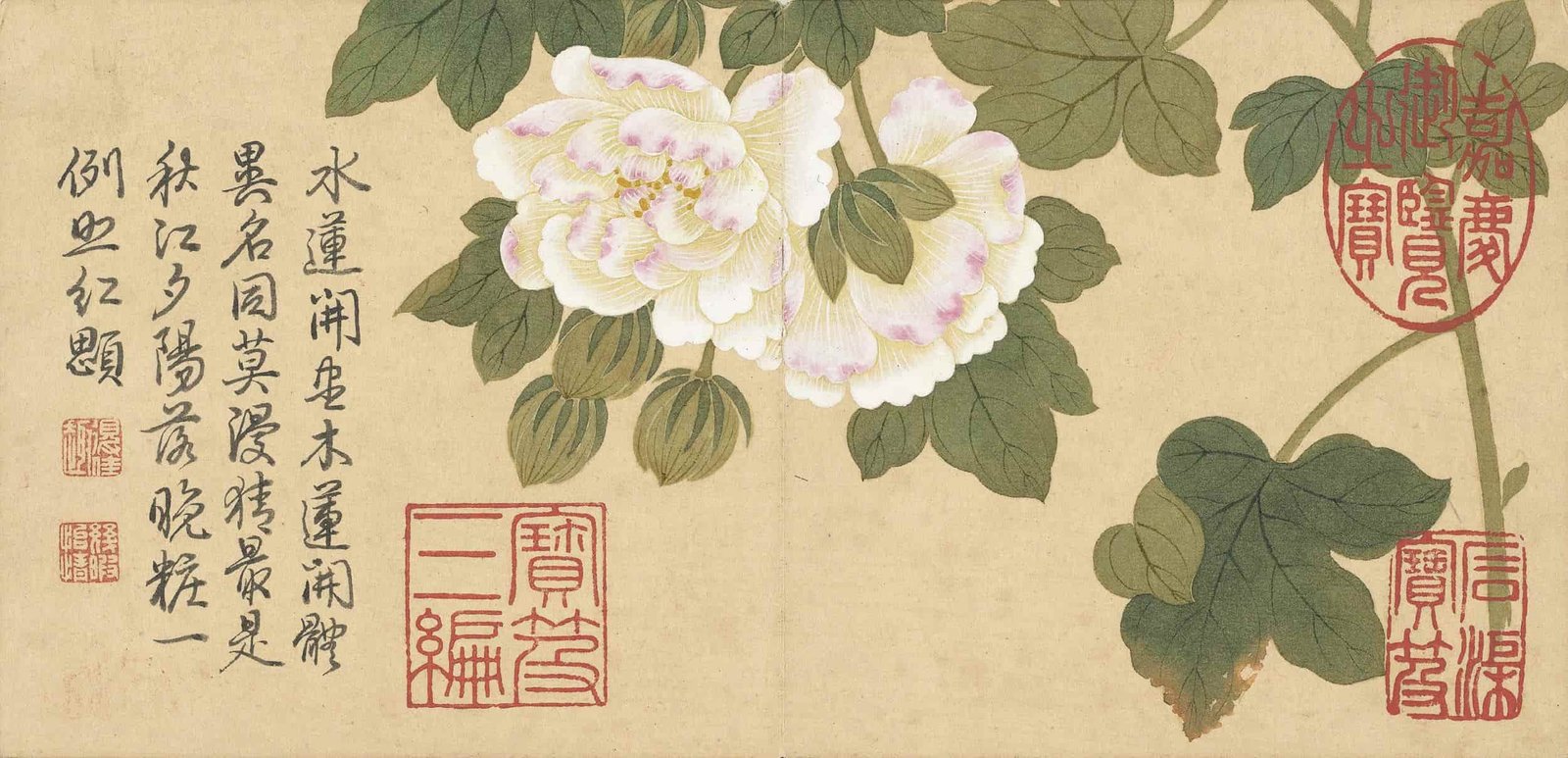
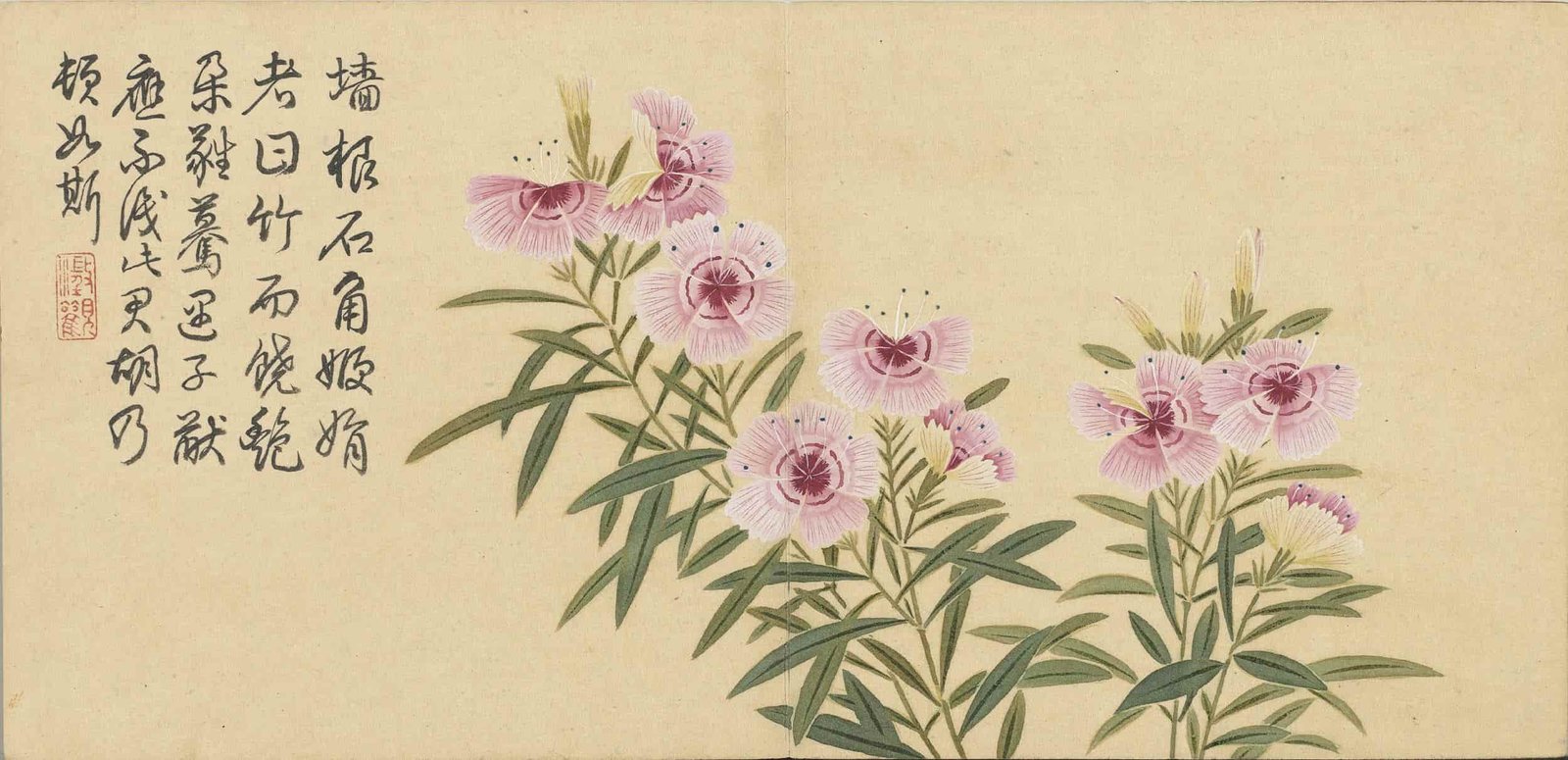
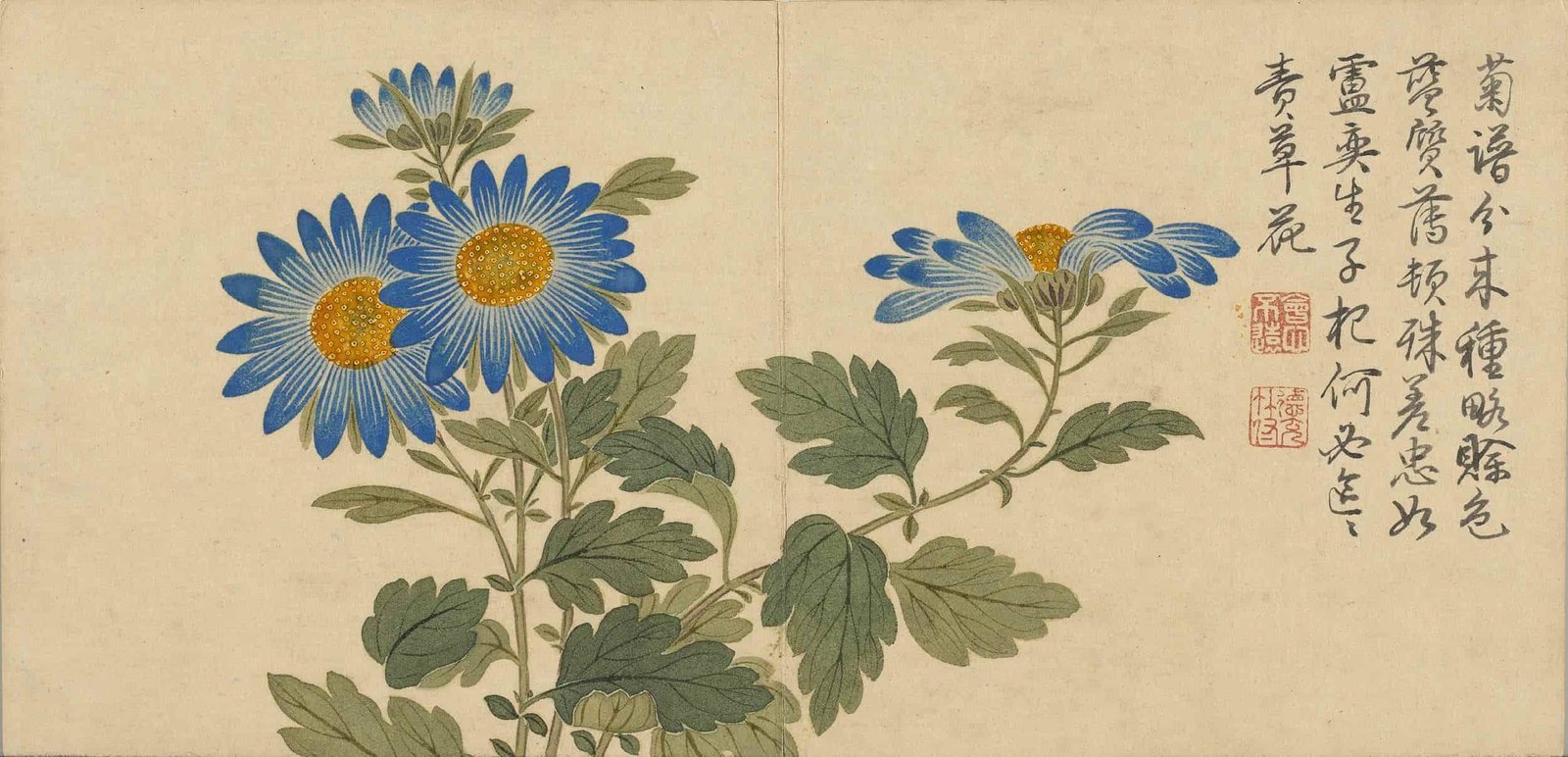
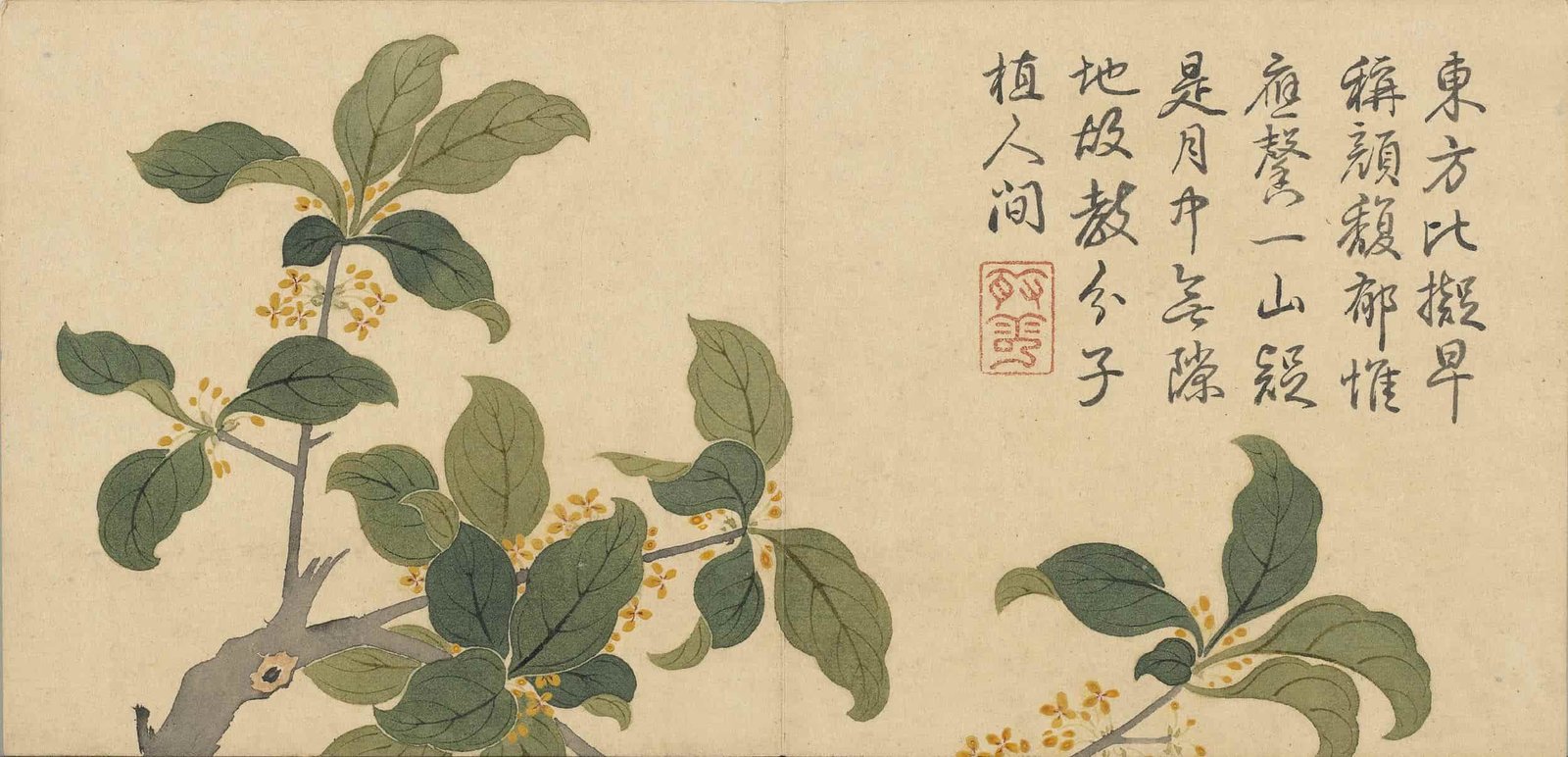
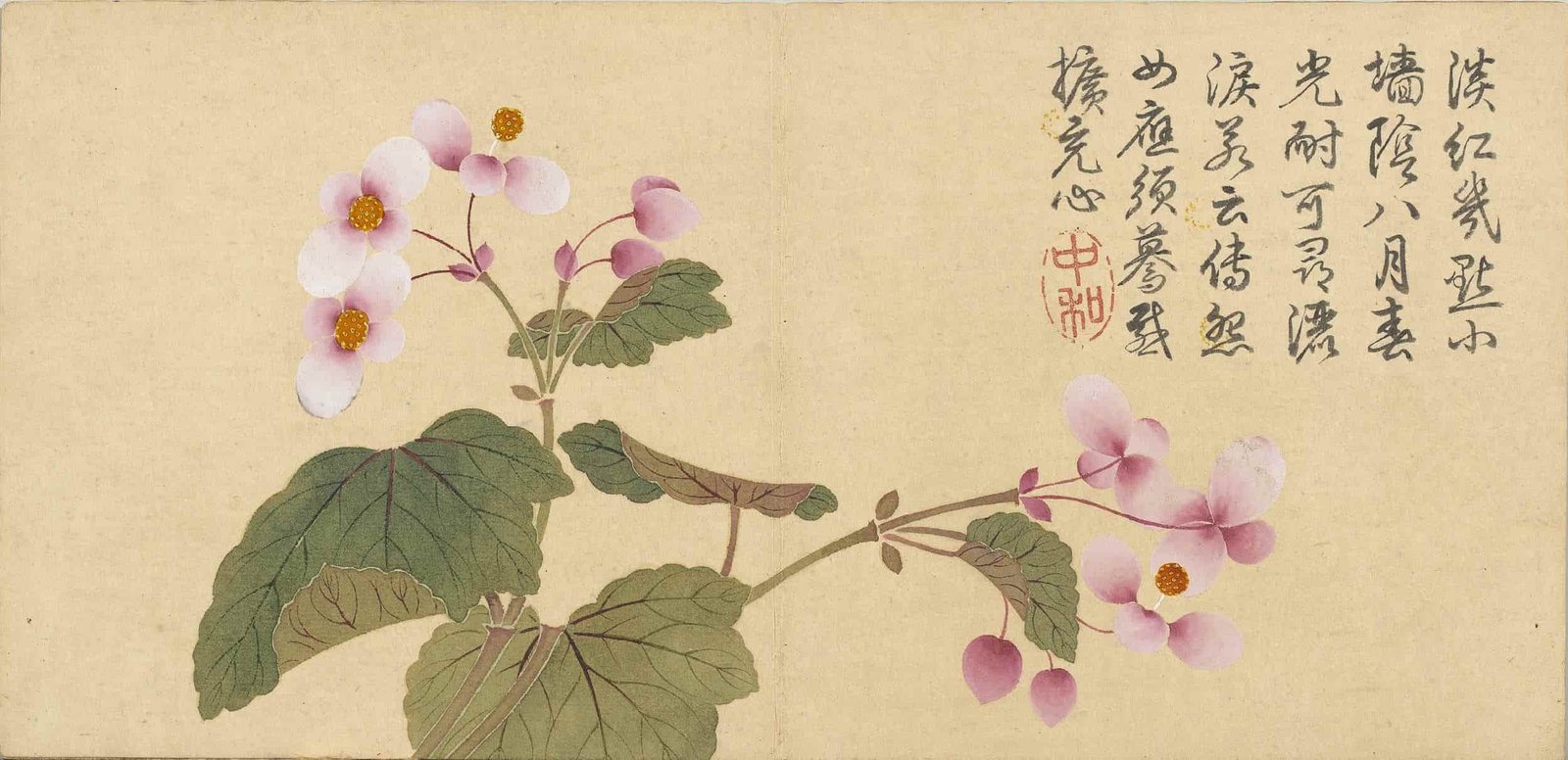
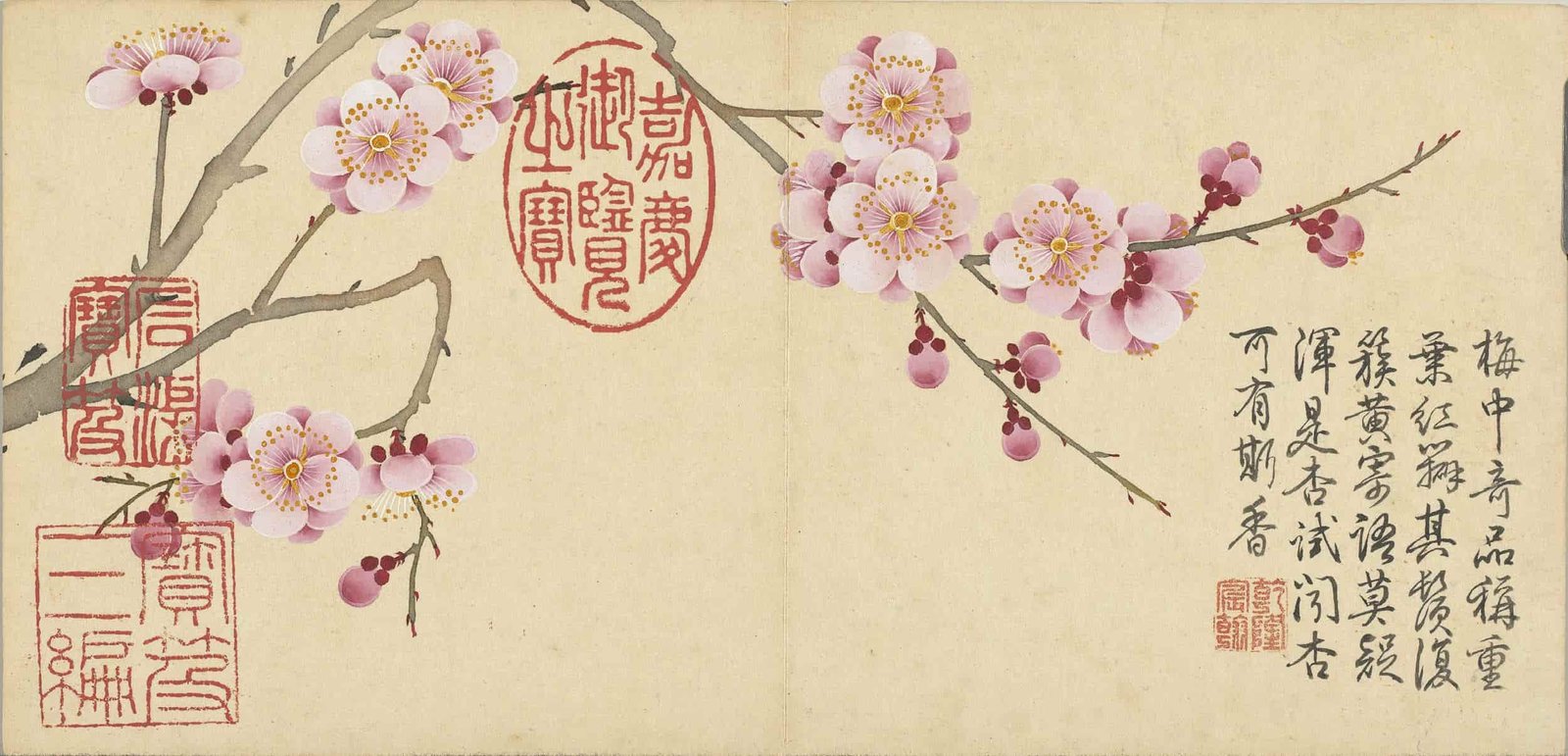
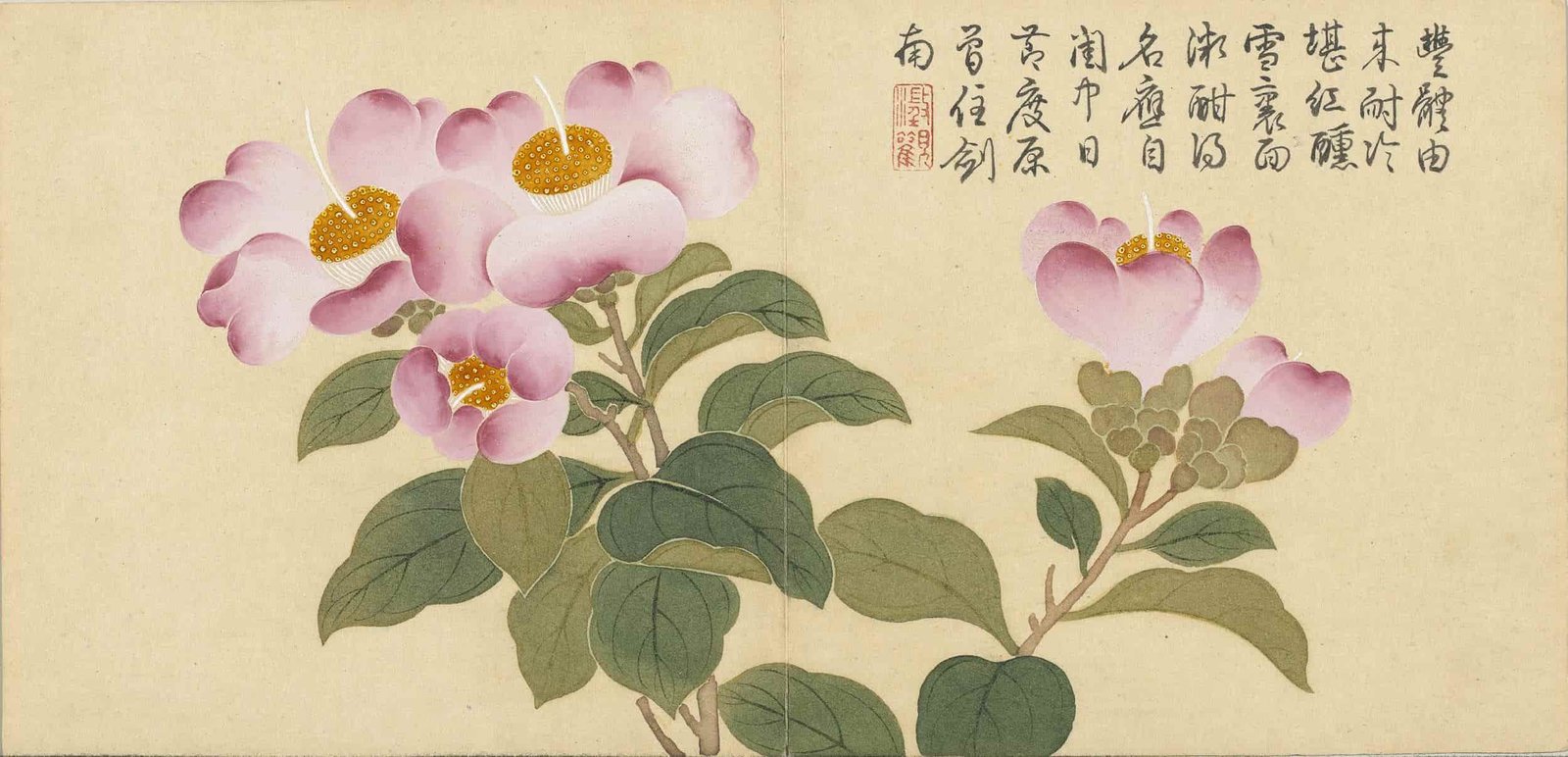
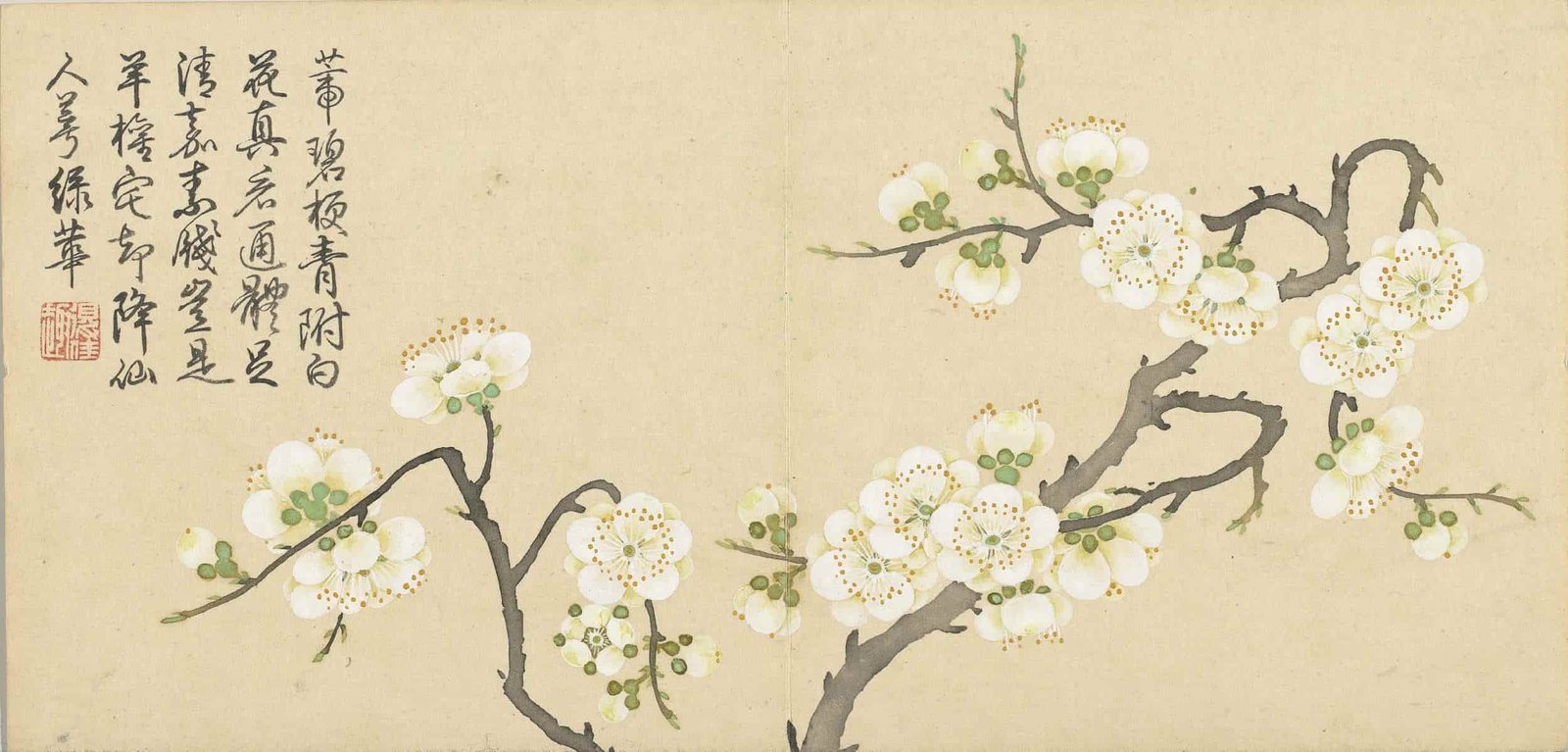
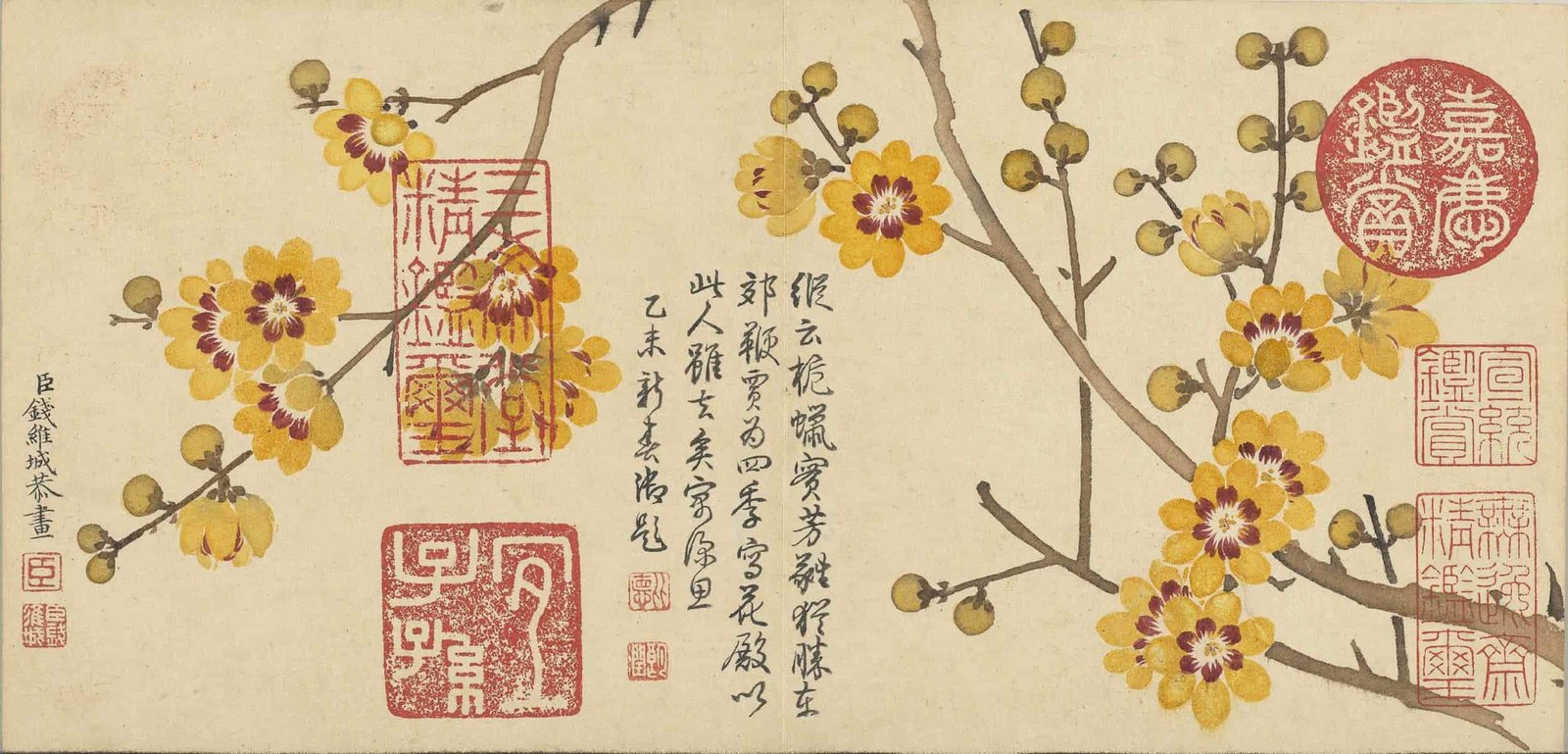
评价
目前还没有评价